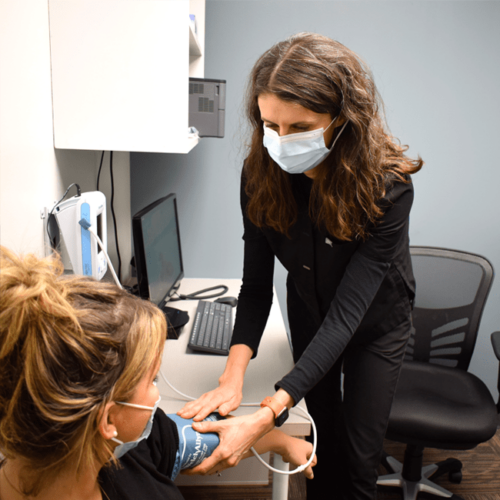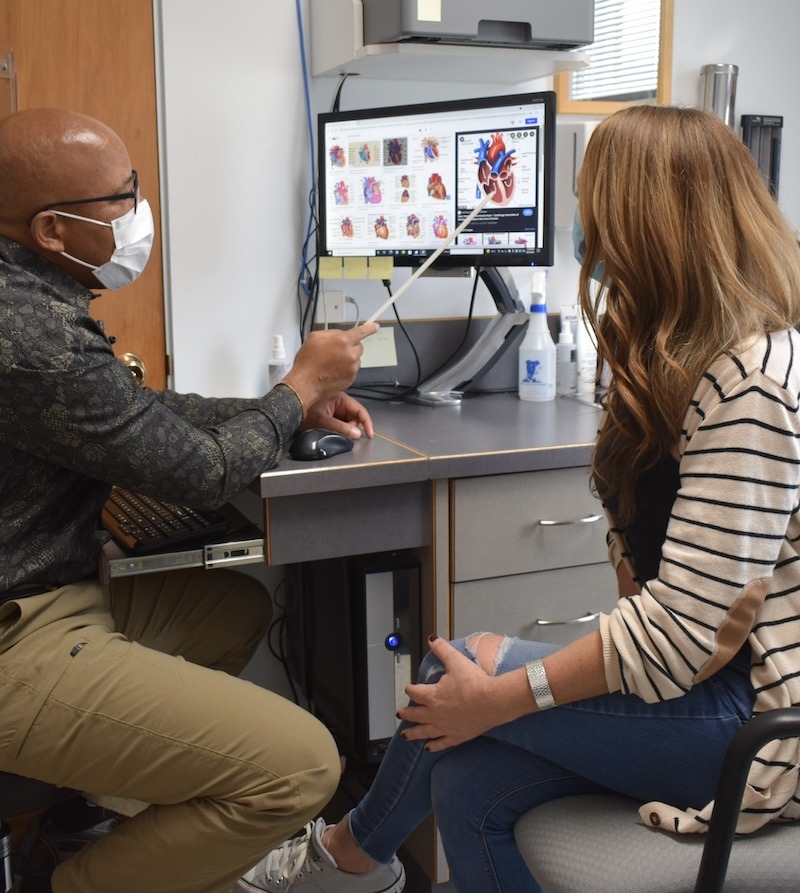Empowering the Citizen Patient

Article #4
Healthy People, Healthy Communities –
Getting the Most Out of Medical Appointments
In this article of our monthly “Empowering the Citizen Patient” series, Dr. Mindy Smith, retired family physician and active member of the Kootenay Boundary Patient Advisory Committee, shares her expertise regarding appointments with your practitioner. Join us as we continue our journey to empower both patients and those who care for them.
When you have an appointment with your family practitioner, it’s natural to have concerns and questions. An effective approach that many of my patients have found useful is to bring a maximum of one to three topics for discussion in order of priority. They create a clear, legible list with questions to ask in order to avoid forgetting important points. Bringing a piece of paper or a notebook for note-taking is also a good idea. Additionally, if possible, bringing someone along for support to help you remember details or take notes may be beneficial. Practicing what you plan to say beforehand can also prove advantageous.
As a practitioner and patient, I’ve experienced this situation from both sides and couldn’t agree more with this approach! I’m hoping the list of further tips below will help ensure you leave your next appointment feeling acknowledged, cared for, and with the professional advice and support you need.
For some issues, you may not need a family practitioner appointment!
Some clinics have physiotherapists and social workers as part of the healthcare team. For example, if you are interested in counseling, a social worker may be best able to help you. To see what additional services are available, reach out to your clinic.
In addition to providing immunizations, pharmacists in BC can now help you with prescription refills, birth control, and 21 minor ailments like UTIs, allergies, pink eye and more. Visit kbpacc.ca or call your local pharmacist for more information. As pharmacists are new at prescribing, be sure to seek additional help if your problem is not resolving or gets worse.

Ask your clinic if they have other practitioners like physiotherapists, or social workers
Before making your appointment: Do you want an in-person visit or phone/video call?
Some medical issues can be appropriate for phone or video calls – known as ‘Telehealth’. This includes wellness visits, skin care, nutrition, counseling, prescription renewals, or urgent problems such as sinus infections and rashes.
Preparing for a visit: What do you want to talk about?
It’s helpful to make a short list of concerns with the most important things at the top. The office assistant can help you decide the best type of appointment for your needs. The practitioner may have different priorities based on your health problems, so share the full list FIRST and then agree on which problem(s) to address at the visit.
It is important to take a list of medications or bring them, including over-the-counter medications and supplements, to the appointment. Are any prescription refills needed?

For new health concerns, be ready to answer these questions: What are the symptoms? How long have you had them? What have you tried for this? Did any treatment work in the past?
A Health Checklist is available to download from the Institute for Healthcare Improvement that may be helpful in preparing for your visit. It is tailored to older adults and helps people consider what is important to them, medication concerns, your sense of well-being, and your mobility. Learn more >>
It may be difficult remembering what is talked about at a visit. Bring a paper and pen, or take notes on your phone. With permission you could record the visit, or bring a trusted person with you; patient navigators or aboriginal health coordinators can serve in this role check out the Empowering the Citizen patient section at kbpacc.ca for more information. Support is really helpful if you are dealing with a difficult situation.
“I still remember how important it was to have a close friend come to appointments with me years ago when I had my cancer diagnosis. With the emotional stress and need to act quickly, it was hard to remember all the information, recommendations and plans. My friend provided emotional support and also took notes and asked questions so we didn’t miss crucial details.” – Ruth Beck, Nelson
During the appointment: Key questions to ask, and options around tests or treatments.
Here are some important questions you might want to ask: what is the expected length of this issue/illness? when to seek help if the problem worsens or persists? and what changes to expect in the near future? Also, have all prescriptions or referrals or other forms been filled out that were discussed? Should a next appointment be set?

For tests and treatments, there are usually different possibilities to consider. If you are concerned about a test or treatment recommendation for any reason, tell your family practitioner or bring someone with you to support you to ask questions! You can then talk about it and make a shared decision that takes into account your situation. If you don’t understand something, don’t be shy! Asking for something to be repeated is totally acceptable, and asking for written information, if that helps, is the right thing to do.
From my experience as a family physician, it was very helpful when patients were open with me about sharing things like their financial, physical or social constraints; past reactions to medications; or concerns about potential side effects or coverage for medications. It really helped me provide the best advice and treatment options for them.
After the visit: What can you do to help track or improve your health condition?
If we wait too long to act, we may forget what we were supposed to do. It’s human nature! The key is to try and follow your family practitioner’s advice right away – for example, get your prescription filled right away or schedule your health screening as soon as possible. Keep track of your symptoms and any numbers, like your blood pressure, to see how you’re doing. Reach out for help if you notice anything concerning.
Click/Tap the LIKE button to share via email, instagram, Facebook and More!
We would love to hear from you!
What did you think of this article? What could we do better? Any suggestions for other articles that would be helpful? Please complete our short survey here!

Get the articles direct to your inbox!
